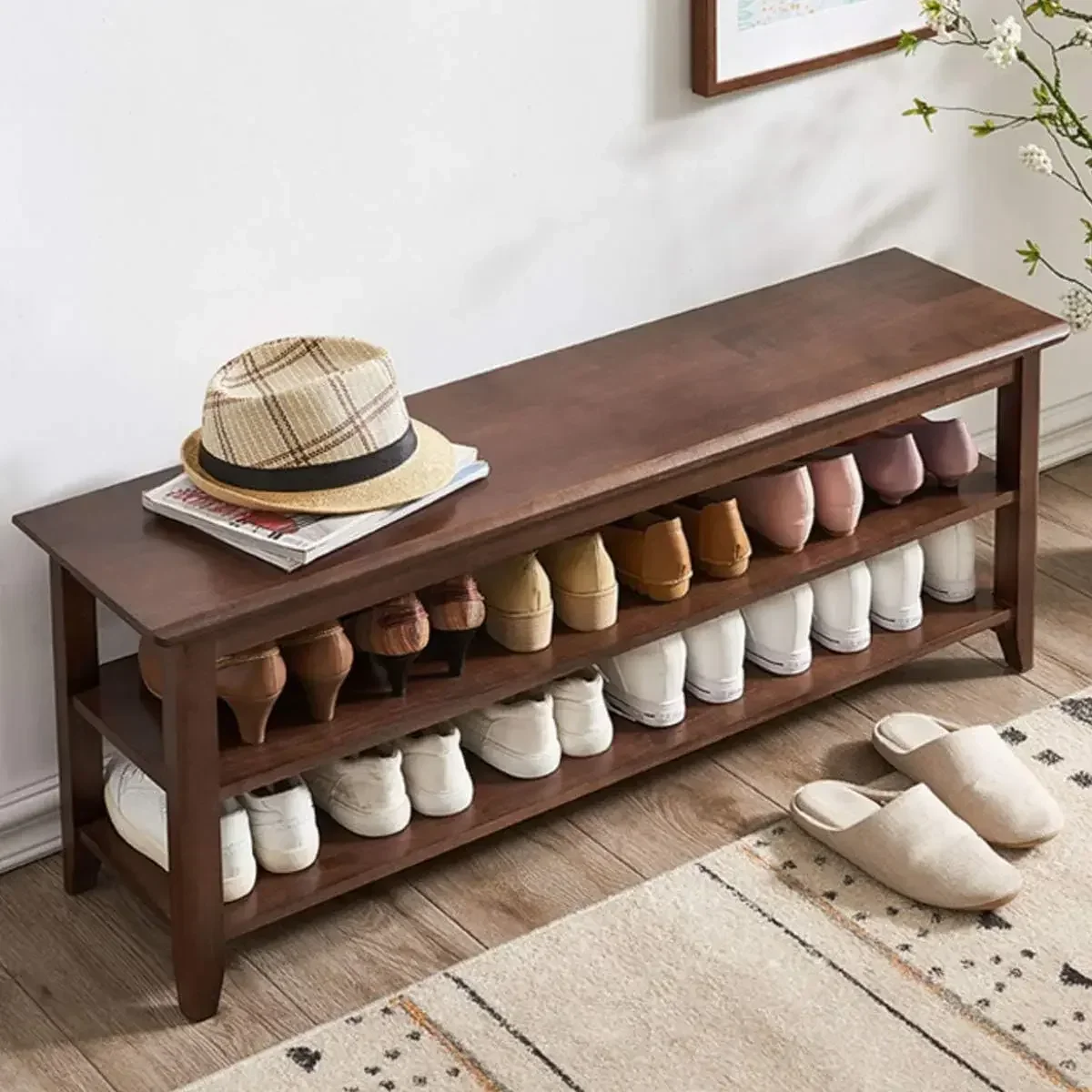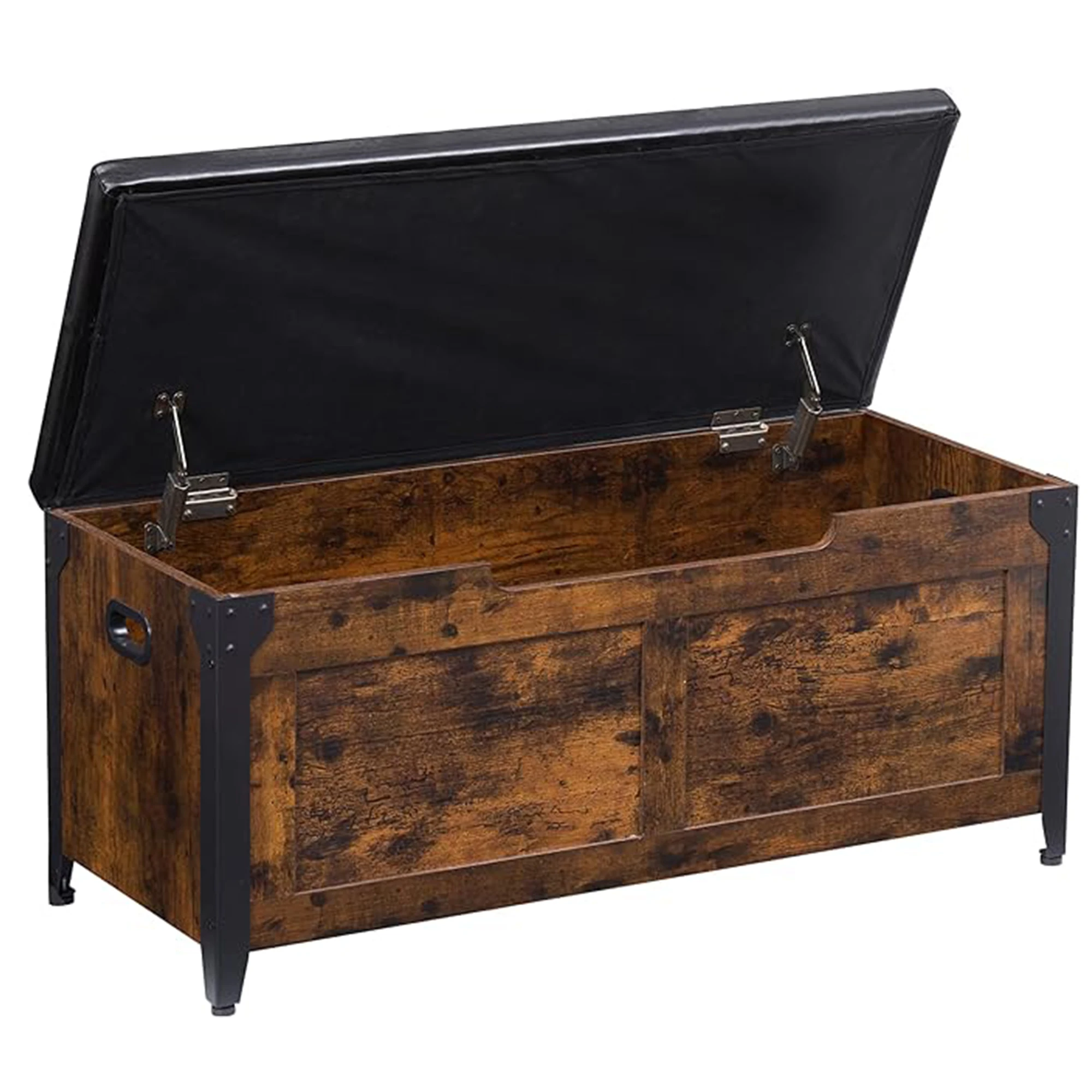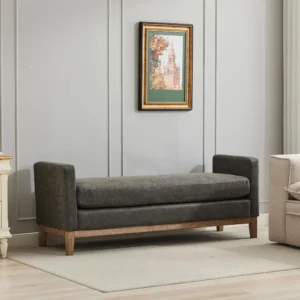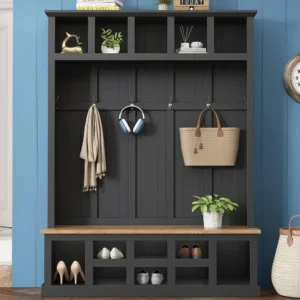Why Choose a Dual-Purpose Bench? Essential Benefits for Modern Living
In today’s homes where space comes at a premium, furniture that serves multiple purposes isn’t just convenient—it’s essential. Dual-purpose benches represent the perfect marriage of form and function, offering comfortable seating while simultaneously addressing storage needs, organization challenges, and aesthetic goals.
A dual-purpose bench, by definition, combines seating functionality with at least one additional practical feature—whether that’s hidden storage, convertible capabilities, or integrated organizational elements. These versatile pieces have surged in popularity as homeowners seek smarter ways to maximize limited space without sacrificing style or comfort.
The value proposition is compelling: why purchase separate pieces of furniture when one thoughtfully designed bench can fulfill multiple roles? This approach to home furnishing aligns perfectly with modern living needs, particularly as urban dwelling spaces continue to shrink in size.
The benefits of incorporating dual-purpose benches into your home include:
- Space efficiency – Eliminate the need for multiple furniture pieces by combining functions
- Cost-effectiveness – Save money compared to purchasing separate single-function items
- Versatility – Adapt to changing needs across different rooms and purposes
- Organization – Reduce clutter with built-in storage solutions
- Design flexibility – Available in countless styles to complement any decor scheme
The growing interest in space-saving benches reflects a broader shift in how we think about our living spaces. With average home sizes decreasing in many urban areas, the ability to maximize functionality without overwhelming a room has become increasingly important. Interior designers now routinely recommend dual-purpose entryway seating as an essential element for modern homes.
As we explore the many applications of these versatile pieces throughout the home, you’ll discover how dual-purpose benches can transform nearly any space—from entryways to bedrooms, living rooms to outdoor areas—with their remarkable blend of beauty and practicality.
Understanding the Types: Popular Dual-Purpose Bench Designs
Before diving into specific applications, it’s helpful to understand the main categories of dual-purpose benches available today. Each type offers unique features designed to address different needs and spaces.
Storage Benches
Storage benches are perhaps the most common and versatile dual-purpose option. They combine comfortable seating with valuable storage space, making them perfect for nearly any room in the house.
- Lift-top designs feature hinged seats that open to reveal storage compartments perfect for blankets, off-season items, or rarely used belongings
- Drawer-based models incorporate pull-out drawers beneath the seating surface, offering easier access without needing to remove items from the seat
- Open shelf/cubby designs provide visible storage for frequently used items or decorative displays while maintaining seating functionality
Most entryway bench storage options stand between 18-20 inches (45-50 cm) tall—the ideal height for comfortable seating while putting on or removing shoes. Common materials include solid wood for durability, upholstered tops for comfort, and engineered wood products for budget-friendly options.
Convertible Benches
These innovative pieces transform between different furniture configurations to serve multiple purposes:
- Bench-to-table transformations adjust from seating to surface space, perfect for small apartments or multipurpose rooms
- Folding/expanding designs can change size or shape to accommodate different numbers of users or space constraints
- Bench-daybed combinations provide seating by day and sleeping space by night, ideal for guest accommodations
Convertible benches typically employ more complex mechanisms and may require higher-quality hardware to ensure smooth operation over time. Look for sturdy metal components and solid construction to support frequent transitions between functions.
Specialty Function Benches
These purpose-built options combine seating with specific additional functionalities:
- Entryway benches with coat racks/shoe storage create complete entry solutions in minimal space
- Kitchen/dining benches with integrated storage help manage linens, serving pieces, or small appliances
- Benches with built-in technology features may incorporate charging stations, lighting, or climate control elements
The specific design features of shoe storage benches and other specialty options are tailored to their intended use, with materials and construction methods chosen accordingly. For high-traffic areas, look for durable finishes and robust construction techniques that can withstand daily use.
Understanding these distinct categories helps guide your selection process when considering which dual-purpose bench might best serve your specific needs, space constraints, and aesthetic preferences.
Entryway & Mudroom Solutions: Creating Organized First Impressions
The entryway or mudroom represents the transition between outside and in—making it the perfect location for a multifunctional bench that helps maintain organization while creating a welcoming first impression.
A well-designed dual-purpose bench transforms these often chaotic spaces into efficient organization zones. The ideal entryway bench combines comfortable seating (essential for putting on or removing shoes) with practical storage for everyday items that tend to create clutter.

For maximum functionality in entryways and mudrooms, look for benches that include:
- Shoe storage solutions – Whether open cubbies for frequently worn shoes or concealed storage for occasional footwear, dedicated shoe space keeps floors clear and organized
- Coat and accessory organization – Integrated hooks, racks, or hanging space for jackets, bags, and seasonal accessories prevent items from being draped over furniture or tossed on floors
- Small item containment – Designated spots for keys, mail, dog leashes, and other small essentials prevent frantic searching during busy mornings
- Weather considerations – Features like water-resistant materials, drainage systems, or boot trays accommodate wet, snowy, or muddy items
Strategically placing your bench creates natural flow through the space. In narrow hallways, sleek entryway hall tree combinations maximize vertical space while minimizing footprint. For wider areas, consider L-shaped or extended benches that create defined zones for different family members.
Typical entryway benches range from 36-48 inches (90-120 cm) in width, though compact options as narrow as 24 inches (60 cm) work well in smaller spaces. Storage capacity varies widely, but a mid-sized bench might accommodate 4-6 pairs of adult shoes along with seasonal accessories.
For homes with limited square footage, organizing a small entryway requires particular attention to bench dimensions and configuration. Look for streamlined profiles that provide maximum functionality without overwhelming the available space.
The materials you choose should reflect both the aesthetic direction of your home and the practical demands of the space. In high-traffic entry areas, opt for durable finishes that resist scratching, moisture damage, and daily wear while complementing your interior design scheme.
Living Room Applications: Stylish Storage That Hides in Plain Sight
The living room presents unique opportunities for dual-purpose benches to shine as both decorative elements and functional workhorses. Unlike utilitarian spaces like mudrooms, living areas demand furnishings that seamlessly blend with your décor while quietly solving storage challenges.
Window seats with integrated storage represent one of the most charming applications of dual-purpose benches in living spaces. These built-in or freestanding options transform underutilized window areas into cozy reading nooks with hidden storage for books, throws, games, or seasonal décor. The bench surface provides comfortable seating while the interior space conceals items that would otherwise require additional storage furniture.
Coffee table ottoman benches offer another ingenious solution, functioning as:
* Comfortable footrests when relaxing
* Additional seating when entertaining guests
* Surface space for books or trays when needed
* Hidden storage for remote controls, gaming accessories, or blankets
For entertaining purposes, strategically placed benches provide supplemental seating that can be easily repositioned as needed, then returned to their primary locations. Unlike bulky chairs, slim-profile benches can be tucked against walls or under console tables when not in use, making them ideal for occasional seating needs.
In open-concept homes, dual-purpose benches can serve as subtle room dividers, creating visual separation between spaces while providing functionality on both sides. A bench with storage placed between living and dining areas, for instance, might hold table linens on one side and entertainment items on the other.
Modern entryway benches can often work beautifully in living rooms, offering clean lines and sophisticated profiles that complement contemporary design schemes. Look for pieces with upholstered tops for comfort and wood or metal bases that coordinate with your existing furniture.
When selecting a living room bench, consider both the physical dimensions needed to fit your space and the storage volume required for your specific items. Common living room bench applications might store anything from gaming controllers and media accessories to craft supplies and photo albums—items you want accessible but not necessarily visible.
Bedroom Organization: From End-of-Bed to Window Seat Solutions
Bedrooms benefit tremendously from the space-saving qualities of dual-purpose benches. These versatile pieces add both functional storage and design interest while maintaining the serene atmosphere essential for restful spaces.
The classic end-of-bed bench serves multiple daily functions:
* A convenient seat for putting on shoes or socks
* A landing spot for tomorrow’s outfit
* Storage for extra bedding, pillows, or seasonal clothing
* A decorative element that anchors the bed visually

Window seat benches transform bedroom alcoves into charming reading nooks while concealing items like books, journaling supplies, or personal mementos. In master bedrooms, these might store rarely-used guest bedding, while in children’s rooms they can contain toys or stuffed animals.
For bedrooms with vanity areas, consider storage benches that slide neatly under makeup tables. These provide comfortable seating during morning routines while storing beauty products, hair accessories, or cosmetics out of sight but within easy reach.
Cushioned entryway benches often transition beautifully to bedroom use, where their comfortable padded tops and storage capabilities make them ideal for the foot of beds or under windows. Look for upholstered options in fabrics that coordinate with your bedding and window treatments for a cohesive look.
End-of-bed benches typically range from 42-52 inches (107-132 cm) in width—proportioned to complement standard bed sizes while providing adequate seating and storage. Storage capacity varies widely by design, but an average bench might accommodate 2-3 folded blankets or comforters, several pairs of shoes, or numerous smaller items.
In children’s bedrooms, dual-purpose benches serve additional functions:
* Toy storage that encourages cleanup
* Seating for reading or play activities
* Step assistance for younger children accessing higher beds
* Adaptable storage that grows with changing needs
When selecting bedroom benches, consider both the physical dimensions that will fit your space and the specific items you plan to store. Upholstered tops provide comfort for seating, while solid construction ensures durability for daily use. The bench should complement your bedroom’s design aesthetic while providing practical solutions to storage challenges.
Kitchen & Dining Area: Smart Seating with Hidden Storage
Kitchen and dining areas present unique opportunities for dual-purpose benches to maximize both seating capacity and storage efficiency. These hardworking spaces benefit from furniture that can adapt to different needs while keeping essential items close at hand.
Banquette or booth-style seating represents one of the most space-efficient applications in dining areas. Built-in or freestanding storage benches can replace traditional chairs on one or more sides of a table, offering several advantages:
- Increased seating capacity (bench seating typically accommodates more people than individual chairs)
- Significant storage volume underneath for table linens, special occasion serveware, or small appliances
- Space savings of 20-30% compared to traditional table and chair arrangements
- A cozy, restaurant-like atmosphere that encourages lingering conversations
For flexible dining arrangements, portable bench options allow reconfiguration based on the number of guests or type of gathering. These can be moved to create more floor space when needed, then returned to the dining area for everyday use.
Kitchen islands with integrated bench seating optimize transitional spaces between cooking and dining zones. The bench component provides casual seating for quick meals or conversation while incorporating storage for items like cookbook collections, special occasion items, or seasonal kitchen accessories.
Corner entryway benches can work remarkably well in dining areas, especially in breakfast nooks or compact eating spaces. Their L-shaped design maximizes seating in tight corners while providing substantial hidden storage underneath.
Families with children particularly appreciate dining benches with storage capabilities. These multifunctional pieces can contain:
* Art supplies for keeping young diners entertained
* Homework materials for after-school sessions
* Board games for family game nights
* Seasonal table decorations and linens
Dining benches typically range from 48-72 inches (122-183 cm) in length, though custom or corner pieces may vary significantly. When selecting dining benches, pay special attention to height compatibility with your table (standard dining height is approximately 18-20 inches/45-50 cm from floor to seat) and weight capacity for both seating and storage functions.
Material selection should prioritize durability and ease of cleaning, particularly for benches that will see food service. Look for stain-resistant fabrics or wipeable surfaces for upholstered options, and consider bench designs with removable, washable covers for family-friendly durability.
Home Office & Workspace Efficiency: Focused Functionality
As home-based work becomes increasingly common, finding space-efficient solutions for productive environments has never been more important. Dual-purpose benches offer ingenious ways to maximize workspace functionality without requiring dedicated rooms or excessive furniture.
Under-window benches transform otherwise underutilized areas into functional work zones. These can incorporate:
* Document storage in built-in drawers or lift-top compartments
* Supply organization in divided sections
* Technical equipment housing with cord management features
* Reference material storage within easy reach
For consultants or those who occasionally meet with clients at home, dual-purpose benches provide elegant extra seating that doesn’t consume permanent floor space. When not needed for visitors, these pieces return to their storage function, maintaining an uncluttered environment conducive to focused work.
File storage benches represent a particularly practical application in home offices. Unlike traditional file cabinets that serve only one purpose, these pieces offer comfortable seating or surface space while concealing organized filing systems below. Look for models with proper hanging file support and smooth-gliding drawer mechanisms for daily usability.
In craft rooms or creative spaces, specialized bench storage can accommodate specific supplies:
* Fabric and pattern storage for sewing enthusiasts
* Paper and embellishment organization for scrapbookers
* Tool compartments for makers and DIY enthusiasts
The principles of space-saving entryway ideas apply equally well to home office environments, where multi-functional pieces help maintain organization without overwhelming limited square footage. Consider how dual-purpose benches can replace multiple single-function items while providing better accessibility to frequently used supplies.
When selecting office-appropriate benches, consider both ergonomic factors (proper height for comfortable seating) and storage accessibility (easy access to contents without major disruption to work). Look for pieces that complement your existing office furniture while providing significant functional improvements to your workspace.
Children’s Spaces: Play, Store, and Grow Solutions
Children’s rooms and play areas present unique organizational challenges that dual-purpose benches address beautifully. These versatile pieces help contain the inevitable accumulation of toys, books, and supplies while providing functional seating for play, reading, and activities.
Toy box benches represent perhaps the most obvious application, offering substantial storage volume while doubling as seating for play or reading. Modern designs feature important safety elements:
* Soft-close hinges that prevent pinched fingers
* Corner and edge protections to prevent injuries
* Ventilation features for safety if a child climbs inside
* Non-toxic materials and finishes appropriate for children’s spaces
Reading nook benches create inviting literacy corners while storing books within easy reach. These can be placed under windows or in room corners, often featuring:
* Book display capabilities for front-facing covers
* Categorized storage sections for different reading levels
* Comfortable cushioned seating to encourage reading time
* Adjustable elements that grow with changing literacy needs
For creative spaces, art supply benches combine activity surfaces with organized storage below. These keep materials accessible but contained, preventing the sprawl of creative supplies across floors and surfaces.
The adaptability of dual-purpose benches makes them particularly valuable in children’s spaces, where needs change rapidly with development. A bench that begins as toy storage for a toddler might later house school supplies or sports equipment for an older child, providing continuity through different developmental stages.
Safety considerations should be paramount when selecting benches for children’s use:
* Sturdy construction that resists tipping
* Pinch-proof hinges and closing mechanisms
* Rounded corners and edges
* Non-toxic finishes and child-safe materials
* Appropriate weight capacity for intended users
Storage capacity should align with the specific needs of your child’s possessions. A typical toy box bench might accommodate 15-20 average-sized toys or a substantial book collection, depending on configuration. Consider transparent compartments or labeling systems for younger children still developing organizational skills.
Outdoor Living: Weather-Resistant Multi-Functional Options
Outdoor spaces benefit tremendously from dual-purpose benches that withstand the elements while providing both comfortable seating and practical storage. These versatile pieces help maximize limited patio, deck, or garden areas while keeping outdoor essentials organized and protected.
Garden benches with integrated tool storage provide convenient seating for planting breaks while housing frequently used implements, gloves, and supplies. Look for designs with:
* Weather-resistant compartments that protect contents from moisture
* Drainage features that prevent water accumulation
* Divided sections for organized tool storage
* Comfortable seating proportions for garden rest periods
Deck boxes that double as seating represent perhaps the most common outdoor dual-purpose bench. These substantial storage units typically feature:
* Large-volume interiors for cushions, outdoor game equipment, or pool supplies
* Waterproof construction to protect contents
* Structural strength sufficient for adult seating
* UV-resistant materials that withstand sun exposure
For poolside applications, specialized benches combine towel and accessory storage with convenient seating for swimmers. These often include ventilation features that allow damp items to dry while stored, preventing mildew development.
Small balconies and urban outdoor spaces particularly benefit from planters with integrated seating. These space-efficient designs allow for both gardening enjoyment and relaxation in extremely limited square footage—combining two functions that would otherwise compete for precious space.
Material selection proves especially critical for outdoor applications:
* Teak and cedar offer natural weather resistance with minimal maintenance
* High-density polyethylene (HDPE) provides exceptional durability without maintenance
* Powder-coated metals resist rust and deterioration
* Marine-grade components withstand persistent moisture exposure
Maintenance requirements vary significantly between materials. While natural woods develop attractive patinas but require occasional treatment, synthetic materials typically need only regular cleaning to maintain appearance and function. Consider your willingness to perform maintenance when selecting outdoor bench materials.
Storage capacity for outdoor benches typically ranges from 30-70 gallons (113-265 liters), sufficient for average patio cushion sets, modest garden tool collections, or pool/beach accessories.
Creative Specialty Applications: Thinking Beyond Traditional Uses
The versatility of dual-purpose benches extends far beyond conventional applications, offering innovative solutions for specific needs and unique spaces. These creative implementations demonstrate how thoughtful design can address highly specialized requirements.

Music enthusiasts benefit from specialized piano benches and musician seating with hidden storage for sheet music, instrument accessories, and maintenance supplies. These pieces provide proper posture support while keeping performance essentials organized and accessible.
Pet owners increasingly turn to dual-purpose benches that incorporate animal accommodations:
* Built-in pet beds that provide dedicated sleeping space without consuming additional floor area
* Feeding station benches that elevate food and water bowls while storing supplies
* Grooming benches that contain tools and products while providing a comfortable height for pet care
Hobby-specific applications address the unique storage needs of various activities:
* Sewing benches with specialized compartments for fabric, patterns, and notions
* Fishing benches that store tackle and equipment while providing seating at water’s edge
* Gaming benches that contain board games, cards, and accessories while offering player seating
Exercise enthusiasts appreciate benches that store equipment while functioning as workout surfaces. These pieces conceal resistance bands, small weights, or yoga props while providing stable platforms for various exercises—particularly valuable in multipurpose spaces that cannot accommodate permanent gym equipment.
In small apartments, versatile benches with hooks serve as comprehensive organization stations, maximizing functionality in minimal square footage. These might combine seating, storage, charging stations, and hanging storage in remarkably compact footprints.
Custom built-in projects represent the ultimate expression of dual-purpose bench potential. These tailored solutions address specific architectural features like:
* Bay windows with awkward angles
* Alcoves and recessed areas
* Under-stair spaces that would otherwise remain unused
* Irregularly shaped rooms that resist standard furniture placement
When considering specialty applications, focus on prioritizing your most pressing functional needs while ensuring the bench still provides comfortable, practical seating. The most successful specialty benches address specific challenges without compromising on basic usability.
Entryway Bench with Cushion, Mudroom Bench with Cushion, Shoe Bench for Entryway
$1,186.63 Select options This product has multiple variants. The options may be chosen on the product pageCoat Rack Shoe Bench, Corner Entryway Bench, Corner Hall Tree, Shoe Bench for Entryway
$313.58 Select options This product has multiple variants. The options may be chosen on the product pageEntryway Bench with Back, Modern Entryway Bench, Shoe Bench for Entryway
Price range: $463.13 through $474.44 Select options This product has multiple variants. The options may be chosen on the product pageCorner Entryway Bench, Entryway Bench with Cushion, Modern Entryway Bench, Shoe Bench for Entryway
$476.34 Select options This product has multiple variants. The options may be chosen on the product pageBench with Hooks and Storage, Entryway Hall Tree, Mudroom Bench with Cubbies, Mudroom Bench with Shoe Storage
$818.38 Select options This product has multiple variants. The options may be chosen on the product pageModern Entryway Bench, Wood Entryway Bench, Wood Mudroom Bench
$497.69 Select options This product has multiple variants. The options may be chosen on the product page
Making the Right Choice: Selection Criteria and Buying Guide
Selecting the ideal dual-purpose bench requires careful consideration of both your specific needs and the physical realities of your space. This systematic approach helps ensure your investment delivers maximum functionality and satisfaction.
Begin by identifying your primary requirements and prioritizing them clearly:
* Is storage capacity your main concern, or is seating comfort most important?
* Will the bench see daily heavy use or occasional light duty?
* Does the storage need to be secure, child-resistant, or easily accessible?
* How many people need to sit comfortably on the bench simultaneously?
Accurate measurement represents perhaps the most critical step in the selection process:
* Measure available floor space, allowing for proper clearance (minimum 24 inches/60 cm in front of the bench for comfortable seating)
* Consider height requirements, especially for benches that will pair with tables or desks
* Evaluate storage volume needs based on specific items you plan to contain
* Account for door swing, traffic patterns, and architectural features that may impact placement
Material selection significantly impacts both appearance and durability:
* Solid woods offer longevity and classic appeal but may require maintenance
* Engineered woods provide cost advantages but typically less durability
* Metal components add strength but may introduce industrial elements to your aesthetic
* Upholstery materials range from family-friendly performance fabrics to luxurious options requiring greater care
For any bench with moving parts, mechanism quality directly affects long-term satisfaction:
* Look for soft-close hinges on lift-top storage to prevent pinched fingers and slamming
* Evaluate drawer glides for smooth operation and full extension capabilities
* Test convertible features for ease of operation and stability in different configurations
Weight capacity considerations apply to both seating and storage functions:
* Seating capacity should accommodate intended users with a substantial safety margin
* Storage floor strength must support the weight of planned contents without sagging
* Overall structural integrity should match expected usage patterns
Small benches for entryways demonstrate how specialized sizing can address particular space constraints while maintaining functionality. When evaluating compact options, ensure they still fulfill your primary needs despite reduced dimensions.
Budget expectations should align with quality and durability requirements. While entry-level dual-purpose benches might start around $100-150, investment pieces with premium materials and construction can exceed $500-1000 depending on size, features, and craftsmanship. Consider longevity and daily utility when evaluating price points—quality pieces from brands like Nested Goods offer greater value over time despite higher initial investment.
Is DIY Right for You? Creating Custom Dual-Purpose Solutions
For those with specific needs, unusual spaces, or budget constraints, DIY dual-purpose benches present an appealing alternative to retail options. Creating custom solutions allows precise matching to your requirements, though it requires careful consideration of skills, tools, and time investment.
The most significant advantage of DIY benches is customization. You can tailor dimensions to fit unique spaces precisely—particularly valuable for alcoves, bay windows, or unusual room configurations that resist standard furniture sizing. Additionally, material and design choices remain completely flexible, ensuring perfect alignment with your aesthetic preferences and functional requirements.
Cost comparison generally favors DIY approaches for basic designs:
* A simple storage bench with basic tools might cost $75-150 in materials versus $200-350 retail
* More complex designs with quality hardware might require $150-300 in materials compared to $350-700 retail
* Specialized mechanisms or premium materials may reduce or eliminate cost advantages
Required skills and tools vary significantly by project complexity:
* Beginner-friendly projects typically require basic measuring, cutting, and assembly skills
* Intermediate designs might incorporate drawer construction, upholstery, or more precise joinery
* Advanced projects could involve complex mechanisms, curved elements, or structural engineering
Time investment represents perhaps the most significant consideration. While retail benches arrive ready to use (or with minimal assembly), DIY projects require substantial time commitment:
* Simple designs might require 5-10 hours of active work
* More complex projects can demand 15-30 hours or more
* Learning curves for new skills add significant time to initial projects
Numerous resources support DIY bench creation, from free online plans and video tutorials to detailed books and local woodworking classes. These resources help bridge knowledge gaps and provide guidance through challenging aspects of construction.
For those uncertain about full DIY commitment, hybrid approaches offer middle-ground solutions—such as customizing retail pieces with new upholstery, adding organizational features to basic storage benches, or combining prefabricated components with custom elements.
Care and Maintenance: Ensuring Longevity of Dual-Purpose Benches
Proper maintenance significantly extends the functional life and appearance of dual-purpose benches. Different materials and mechanisms require specific care approaches to perform optimally over time.

Wood care varies by finish type:
* Solid wood with oil finishes benefits from periodic reapplication of appropriate oils (typically every 6-12 months)
* Lacquered or polyurethane finishes require gentle cleaning with minimal moisture
* Painted wood surfaces need protection from chips and scratches to prevent moisture penetration
* All wood benefits from consistent humidity levels to prevent warping or cracking
Upholstery maintenance depends on fabric type:
* Performance fabrics typically allow spot cleaning with mild soap and water
* Natural fibers may require professional cleaning for stains
* Leather and faux leather benefit from appropriate conditioners to prevent cracking
* Removable covers offer significant maintenance advantages through machine washing
Metal components need protection from corrosion:
* Painted metal should be monitored for chips that might allow rust formation
* Chrome and stainless steel maintain appearance with regular polishing
* Outdoor metal requires more frequent inspection and maintenance
* Moving metal parts benefit from appropriate lubrication
Mechanical elements require periodic attention:
* Hinges perform best with occasional light lubrication (silicon-based for quiet operation)
* Drawer slides need cleaning to remove dust and debris that impede smooth movement
* Convertible mechanisms should be operated regularly to prevent stiffening
* All hardware should be checked periodically for tightness and proper function
Weight distribution plays a crucial role in preventing damage:
* Avoid concentrated heavy loads that could warp surfaces or stress joints
* Distribute stored items evenly, particularly in wide benches
* Be mindful of weight limits for both seating and storage functions
* Consider reinforcement options for benches subjected to heavier-than-intended use
Preventative care significantly reduces the need for repairs:
* Address small issues before they become major problems
* Maintain consistent environmental conditions when possible
* Follow manufacturer guidelines for specific products
* Consider protective measures like pads or covers for high-wear situations
With proper selection, placement, and maintenance, a quality dual-purpose bench from trusted providers like Nested Goods becomes not just a furniture purchase but a long-term investment in both functionality and style—continuing to serve multiple needs beautifully for many years.







